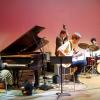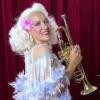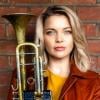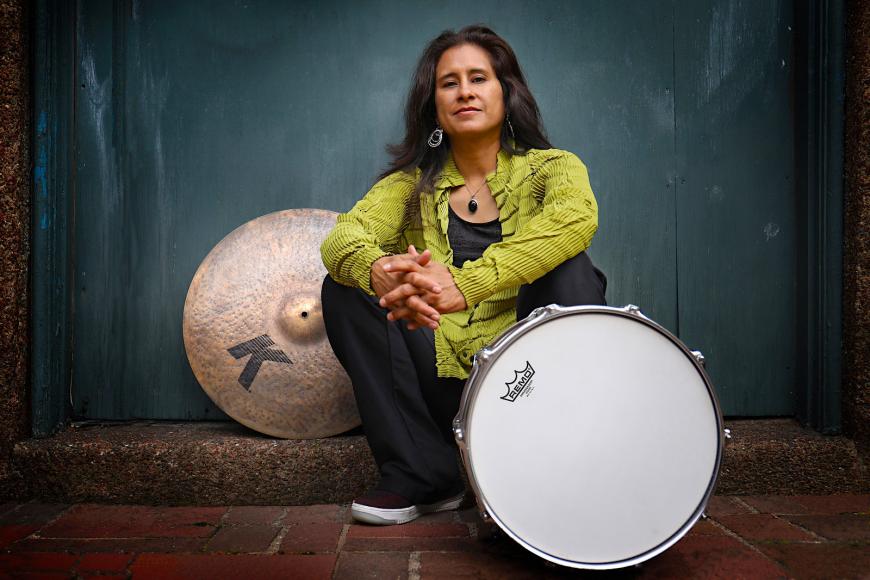
Throughout the persistent pandemic, a cadre of instrumentalists has sustained the sound and feel of fine jazz at Sunday afternoon sessions summoned by alto saxophonist and San Francisco State University instructor Andrew Speight. “A lot of the chemistry,” he told the small masked audience in his Burlingame living room studio last month, “is built around the drummer. And today the drummer, and the drama, is Sylvia Cuenca.” Dynamic and tasteful, Cuenca has been seen regularly with Speight and at venues returning to live music around the Bay Area, including the Bird and Beckett bookstore in San Francisco’s Glen Par, the Black Cat club in the Tenderloin, and the Kuumbwa Jazz Center in Santa Cruz — securing the rhythm alongside her musical and life partner, bassist Essiet Okon Essiet.
“I’ve had the privilege of playing with some of the greatest drummers, like Jimmy Cobb, Max Roach, and Billy Higgins, so I want that kind of comfort and skill when I play,” says Speight. “Sylvia is now a person like them, a heavy hitter; she has such a great feel, and she knows how to swing.” Since the mid-1980s, Cuenca has shuttled between coasts, both as a player and an educator, and has extended these parallel careers to Europe and China, with residencies at several universities. Aside from Speight’s House of Bop sessions –– where guests will include Eric Alexander and Ralph Moore on Sept. 25 and 26 — Cuenca will appear with keyboardist George Cables, trumpeter Eddie Henderson, and bassist Essiet Okon Essiet at the Piedmont Piano Company on Sept. 24, and at Mr. Tipple’s Recording Studio on Oct. 21. SFCV spoke with the drummer after her trio’s recent gig at Pier 23 and over a subsequent dinner at the Limón Rotisserie.
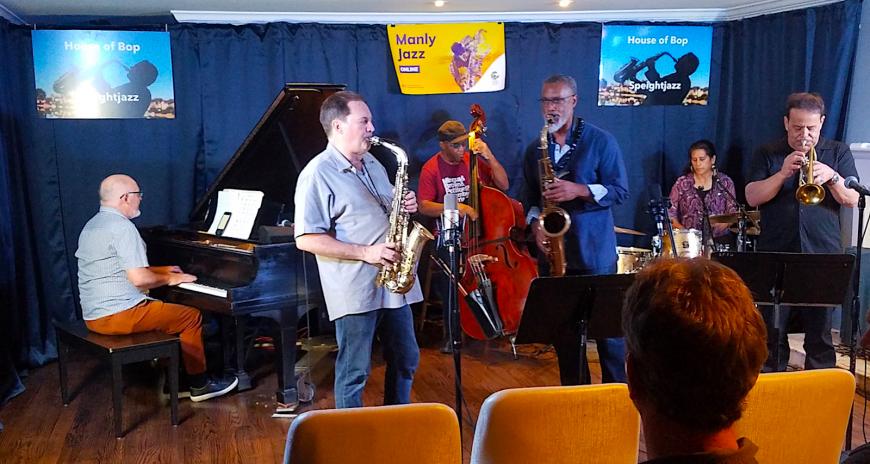
You’ve been a consistent bicoastal, even during the pandemic.
I’ve been to New York two or three times since it started, and I’m going again at the end of September, I’ll be playing at this club called Cellar Dog in the Village, with Essiet, Dave Kikoski on piano, Craig Handy on saxophone and flute, and Freddie Hendrix, an ensemble I’m hoping to record with.
Do you manage your itinerary yourself?
I always have, and I will until I’m able to hire a booking agent or a manager. I think I’d like to get a current CD out first. [Clark Terry’s Etoile Records released Cuenca’s The Crossing in 1998 and EXIT 13 in 2002.]
How do you compare the coasts?
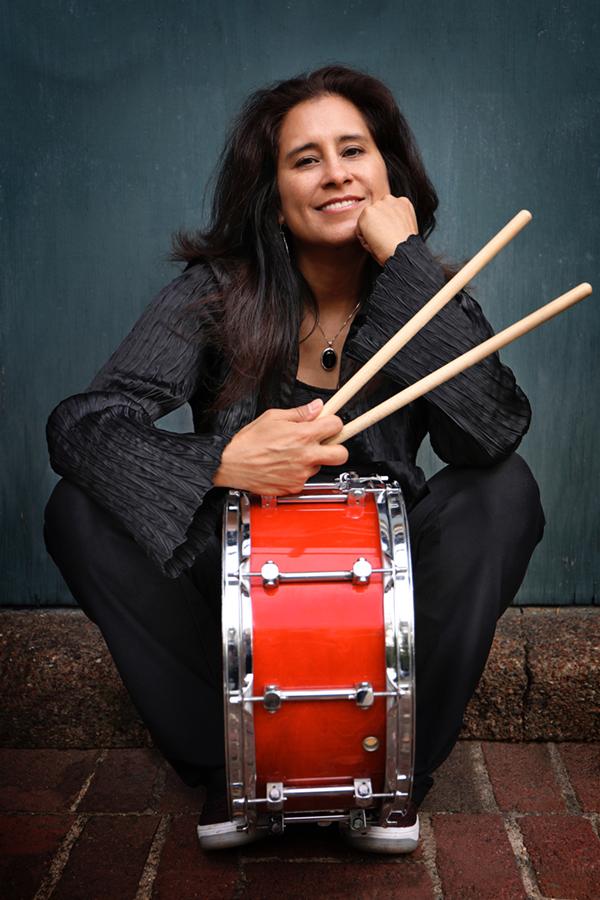
You’ve heard about West Coast versus East Coast energy, and I think that’s very real. It has to do with the pace of life. There’s a sense of urgency in the air in New York, with a lot more musicians in a closer area. Here in the Bay Area — with the South Bay, the East Bay, the San Francisco scenes — it’s hard to get one kind of scene, where in New York, you can finish a gig downtown and then go from one club to another, it’s all right there. Here, where it’s spread out, it’s hard to get people motivated.
Had your family motivated you, growing up?
My father played guitar, and there’d be Spanish boleros and jazz songs. My mother knew a lot of lyrics to standards. And my brother played guitar and bass and mandolin. They weren’t professional musicians, but I grew up with their love of music, on the radio and in my father’s record collection.
I Googled “Cuenca” as a Spanish place name.
My heritage is Mexican, and I’ve got some Tarahumara Indian from my maternal grandmother, from the Chihuahua region. My parents were bilingual, but they didn’t speak Spanish with me when I was growing up.
Any effort to point you toward a musical career?
No, not at all. It just kind of happened naturally, because I was around it all the time, and was hearing music on the radio and on my dad’s collection of records. One of them was a Max Roach recording, Live at Basin Street [Clifford Brown and Max Roach at Basin Street, EmArcy Records, 1956]. I remember hearing Max’s solo, and it was so clearly articulated. He was outlining the form and playing melodies on the drums. And I was blown away by it, and started my own record collection.
What about school?
At Markham Junior High School [in San José], I took a snare drum class and fell in love with it. Then my dad got me some [private] drum classes. I could hear the sound of the set on the recordings, and I kind of figured it out.
How long before you were getting out and seeing it live?
There was a club in San Jose called the Garden City, that was my hang. Smith Dobson was the jazz director and house pianist, and he would bring in well-known artists from out of town. I’d sit right behind the drummer, and learn so much.
Were you able to play out yourself?
I was trying to get involved in whatever scene I could, including San Jose musical theater, having opportunities to play in the pit, where I got experience reading. There was also a group called the North Area Youth Jazz Ensemble, and I got in as second drummer when I was 16 or 17.
Did you find female role models?
I remember visiting New York and going to hear Terri Lyne Carrington, and it was like, “Yeah, that’s cool, she’s doing what I want to do.” It was interesting to see a woman doing that. There weren’t many, though there was Karen Carpenter, in pop music. But I wasn’t thinking about that. I was thinking about the music, and what I was drawn to.
What other influences?
I got familiar with what some people called The Magnificent Seven, seven drummers that helped to shape modern drumming as we know it today: Kenny Clarke, Art Blakey, Philly Joe Jones, Max Roach, Roy Haynes, Elvin Jones, and Tony Williams. Each one had his own unique sound. That was how I learned the language, by imitating them. Try the first note, then add notes, and you have a phrase.
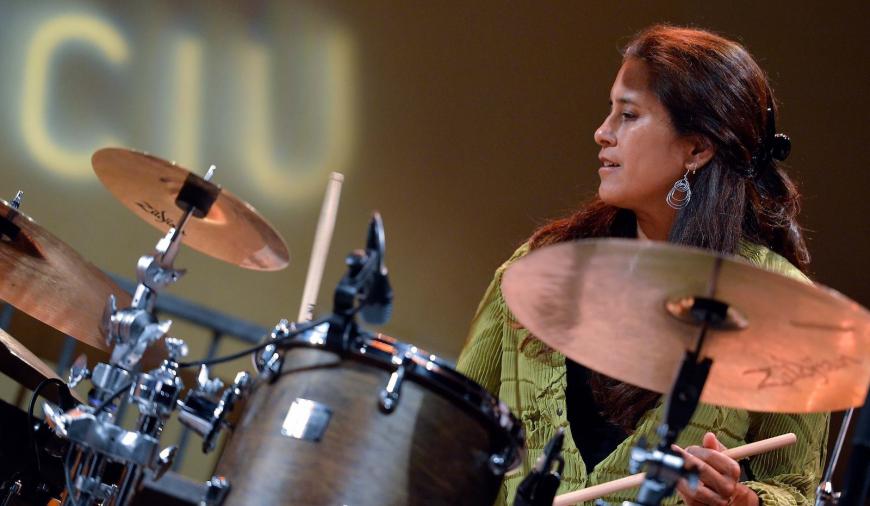
Were you getting jazz gigs?
My first was with [guitarist] Eddie Duran. He hired me and [bassist] Larry Grenadier to play with him at the old Pearl’s, in Chinatown, and that was a big deal to us! We were both young and just starting out. I started doing little gigs around, but I was ready to leave the area, I wanted to spread my wings. But before I left for New York, I got a scholarship to the Stanford Jazz Workshop, the first camp they had, and the faculty was Stan Getz, George Mraz, and [drummer] Victor Lewis. Victor wasn’t part of the Magnificent Seven, but he really inspired me, because he always seemed to know exactly what the music needed.
That’s the feeling I get from listening to you.
Oh, wow, what a compliment. I went to Stanford Jazz for two years, and then I started teaching there. [Drummers] Billy Higgins and Tootie Heath were there at the same time. I look back and say, oh god, I was so lucky to hang out with them, you know? I studied [privately] with Victor Lewis, and he’s the one who encouraged me to move to New York; he was already living there. So on Aug. 22, 1985, I moved. I said to my parents, “I want to try this for a few months.” And I packed my drums and cymbals and a suitcase and I flew from San José to JFK. I knew two people in New York, and they helped me to get a place to live. I thought, all my heroes are here, within a few blocks of each other. I saw Billy Higgins at Sweet Basil’s. I went up the street and sat right behind Elvin Jones. I was going out every night and saw all these people I’d only heard on recordings.
And you found your own drum teachers, without attending any music school.
I studied with Victor Lewis on and off, I studied with Adam Nussbaum, I got a grant to study with Keith Copeland for a year. I studied with Portinho, because I fell in love with Brazilian music.
You spent a lot of time with a couple of older jazz masters, four years with Joe Henderson and 17 with Clark Terry. How did those long-term gigs come about?
I had met Joe at San Jose City College, when he was brought in as a guest. A year after I moved to New York, I went to the Vanguard to hear Joe play, and I said hello, and he said, give me your number. Three months later I got a phone call, “Yeah, Sylvia, so this is Joe Henderson,” and I thought somebody was playing a trick on me. Then he was asking for my passport number and saying, “I have a tour in Europe, can you make it?” I was like, “Yeah!” He was in a unique situation, because his manager had suggested an all-woman band.And later, after a series of tours and rhythm sections, he kept me in his other configurations.
You also worked in Joe’s trio, and got to work in a quintet and big band with Clark. What did you like about Clark’s approach to the music?
You could hear his personality in his sound and in his compositions, swinging compositions that were fun to dig into and to shape with his sound. He was very cheerful. His time was strong, and his playing was always consistent — he was playing strong well into his eighties.
When I first spoke with you about this profile, you told me about a Clark Terry tribute you’ll be part of.
It’s a centennial celebration, in St. Louis [Terry’s birthplace], in December. I think I’ll be the only person from his band, and I feel really honored; I’ll be playing with musicians like John Clayton.
At Piedmont Piano this month, you and Essiet will be playing with pianist George Cables and trumpeter Eddie Henderson, which will be something of a reunion with older living mentors.
Essiet has been with George for 10 years or longer; he’s toured with him and will be going back to New York at the end of this month to play three or four nights at Smoke with George’s trio. George is a passionate, playful, and spiritual player, with a beautiful feel and boundless creativity.
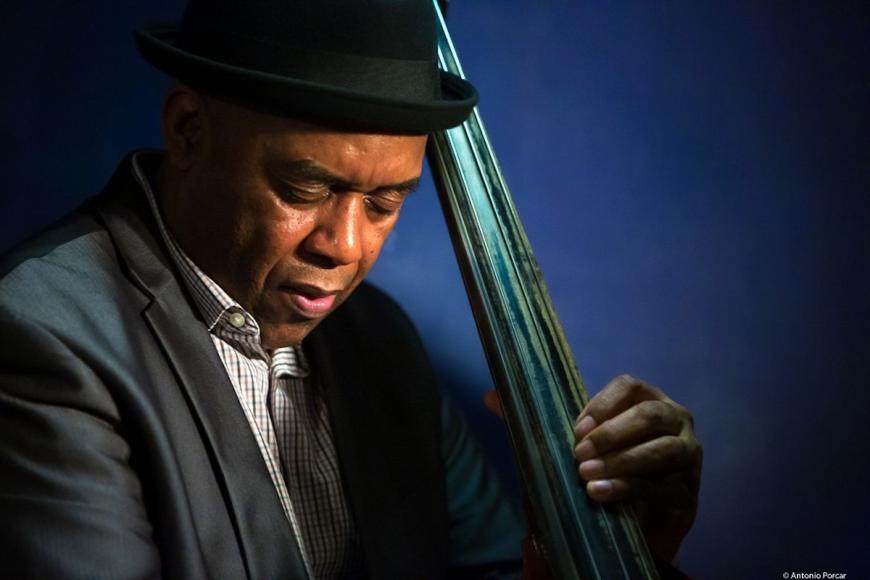
And Eddie?
I met Eddie when I was 17, in San José, I was playing a gig outdoors with [woodwind and flute player and composer] Dawan Muhammad, and Eddie was a friend of Dawan’s. When I first moved to New York, Eddie hired me to play a weekly gig a Mikell’s and at Visiones. And we toured to Portugal. He’s seen me growing and he checks in on me. He’s become my friend.
What about Eddie’s horn?
He’s got a beautiful sound, he knows exactly what to play. He’s got his own voice; he plays his ass off! [laughs]
It seems like we’ve had more of you here in your homeland during the pandemic, and you’re more-or-less the house drummer at Andrew Speight’s place in Burlingame, often alongside Essiet. Are those vital gigs?
They’re fun, but it’s also keeping my reactions sharp and keeping me active and preparing for a gig. There’s a certain kind of chops that, if you’re not active, go away really quickly. It’s important for me to play with other musicians in the moment, that’s our spontaneous art form. And Andrew is a fiery player, he’s a blast to play with.
As a longtime professor of music himself, Andrew thinks of you as a superior teacher.
I particularly love teaching privately. But I’ve also taught combos at the San Francisco Conservatory of Music, and I’ve worked online with a group of international students in connection with the new Brubeck Jazz Summit [headed by former SFCM faculty member Simon Rowe].
What’s the state of jazz for girls and women coming up?
Overall, it’s a male-dominated field. But when I was coming up, I just didn’t associate with people who didn’t support women playing this music, which doesn’t have a gender. My focus was taking care of business on the bandstand. But I think there are more opportunities than ever now for girls to get involved and to pursue jazz for a career.


